#STAT Health - Science
Explore tagged Tumblr posts
Text
Nonprofit naloxone maker celebrates FDA approval by donating 200000 doses
Nonprofit naloxone maker celebrates FDA approval by donating 200,000 doses https://www.statnews.com/2023/08/09/naloxone-harm-reduction-therapeutics/?utm_campaign=rss A nonprofit naloxone manufacturer is celebrating its recent market approval by giving away 200,000 doses of its over-the-counter nasal spray. Harm Reduction Therapeutics said in a statement that it will donate nearly a quarter-million doses of its new product to the Remedy Alliance, an organization devoted to affordable naloxone access. The announcement comes on the heels of the Food and Drug Administration’s approval of Harm Reduction Therapeutics’ product RiVive, a new nasal naloxone spray used to reverse opioid overdose. Read the rest… via STAT Health - Science and medicine news https://www.statnews.com/category/health/ August 09, 2023 at 11:33AM
7 notes
·
View notes
Text
the lies around pregnancy - that it's inherently safe, that it doesn't do you permanent damage, that it's only extremely rare for people to die of pregnancy complications, etc like
all of these are lies constructed so that more people will get pregnant w/o knowing all that
OP, none of that are "lies", the scarcity of death in childbirth is an objective observable reality.
You people will literally making shit up without bothering pulling out actual DATA because your perspective relies on ideology rather than reality.
Here's the REALITY check:

(x)
Do the math, and you'll realize in the listed country with the highest childbirth (Colombia) has a whooping...... 0.05% death in childbirth rate 💀💀💀
which means every country with a decent/existing healthcare system has below 0.05% death in childbirth rate. So YES, IN REALITY death in childbirth IS a scarcity.
Erasing death in childbirth is a totally achievable objective with a proper healthcare system ; the problem is not pregnancy, but rather access to HEALTHCARE.
You are just sooo desperate to fearmongering & vilify pregnancy you are literally making shit up to make your point.
and btw,
miscarriages and abortion are NOT the same. As someone who's witnessed her sister mourn the death of her unborn child I will never accept people lumping her struggle with women ACTIVELY KILLING their child. Every single person acting like they were the same is absolutely despicable.
Yes pregnancy takes a toll on the body and definitely needs a proper care all throughout the gestation system; but talking about "violence" and "brutality" of pregnancy while raving about....abortion, is absolutely hysterical.
I will never understand the cognitive dissonance of arguing that pregnancy -that the adult female body was literally WIRED to process- is somehow more dangerous than abortion, which is the surgically or chemically induced interruption of a symbiotic biological process (no "parasite" or "cancer"...). Abortion has well documented negative impacts on the women health and fertility that the so called defenders of female health are willfully ignoring. They are not interested by those alternatives and act like they don't exist or aren't valid because they do no want to see solution not involving a fetus death.
Never forget they are the same people seething at the possibility of science allowing gestatating fetus outside their mother womb if they don't want to deal with carrying a baby. Removing someone's right to life is their first objective.
the thing is like. i get that it's scary and makes people who do desire to get pregnant uncomfortable when we talk about the brutality and violence of pregnancy and the damage that pregnancy can do to your body
but you deserve to give informed consent to that process.
the lies around pregnancy - that it's inherently safe, that it doesn't do you permanent damage, that it's only extremely rare for people to die of pregnancy complications, etc like
all of these are lies constructed so that more people will get pregnant w/o knowing all that
there needs to be more talk about the impact of miscarriages and how common they are, how different abortion processes are and how accessible they are
but also like. talking about how pregnancy fucks your body up should not be taboo
this is a process that permanently changes most people's bodies, and that's even if the pregnancy doesn't do them like. severe illness or injury
and i just think everybody should have a right to KNOW that
bc to live in a society that intentionally obscures and hides facts about a completely optional and dangerous process does so for a reason, and that reason is based in a very sinister ideology that does not value bodily autonomy or informed consent
#this post has 20k+ notes and literally no one bothered check out OP's blatant lie#no braincells detected out there#posts like that reminds me how much pro choice are science and reality deniers#they are fanatics removed from actual reality#unlike pro choicers pro lifers dont deny that pregnancy represent health risk and that more attention and investissment needs to be provide#they just KNOW SCIENCE and that healthcare can help erasing death in childbirth#i mean look at the country down the list!!!! it's totally possible#i mean look at OP saying shit clearly debunkable with a few clicks#stats are just there you guys#TRAGIC.#pro life#health#to pregnancy care
76K notes
·
View notes
Note
Hi! My employer's workplace wellness program was recently revamped, and I'm trying to assess whether it's slid into the nonsense side of wellness-world. Specifically, there's a webinar being offered by a guy named Abra Pappa on using an "anti-inflammatory diet" to "battle against chronic diseases… including heart disease, diabetes, arthritis, and even certain cancers." This sounds… sketchy to me, but I know you have both expertise in nutrition and a strong bullshit detector, so wanted to ask what you make of it.
Okay long story short never trust anyone who got their degree from a university that started off as a school for chiropractors.
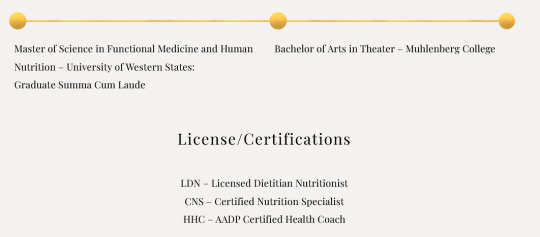
Abra Pappa got her MS in Functional Medicine and Human Nutrition after getting a BA in Theater; I checked the requirements for that degree and the school's whole catalogue is throwing red flags but what's throwing the most red flags for me is that if I wanted to get a degree in nutrition from an ACEND accredited program I'd need to take a hell of a lot more than one bio class, one anatomy OR one physiology class, one medical terminology class, one nutrition class, and one biochemistry class in order to get into a master's program.
It's funny because she went from a BA in theater arts to an MS in Functional Nutrition and Human Nutrition and I've been trying to go from a BA in Theater Arts to an MS in nutrition and *aside* from the whole private school costs thing one of the major barriers is that I'd basically need to re-do all of my undergrad to get in a lot of chemistry, some calculus, and MANY nutrition classes before I qualified for a Master's program. But based on the program she took I'm only one medical terminology and one biochemistry class away from a Master's program instead of more like ten to fifteen classes (primarily in nutrition, chemistry, and physiology) away.
Anyway she says she's a Licensed Dietician Nutritionist. There are some states that allow LDN certification, New York is one of those states. *BUT* to be an LDN in New York you have to
Complete a program in dietetics-nutrition that culminates in a bachelor’s degree that qualifies for certification in dietetics-nutrition or has been accredited by the Commission on Accreditation for Dietetics Education (CADE).[Note: CADE is now ACEND] The program must include at least 45 semester hours of coursework in dietetics/nutrition and must include at least 20 semester hours of coursework in the area of human biological sciences and social and behavioral sciences
Pappa went to the University of Western States in Oregon, and the only ACEND accredited school in Oregon is at OSU, so if she's an LDN it's from someplace that isn't New York, where she lives and works.
She also claims to be a CNS, a Certified Nutrition Specialist, but in order to qualify for THAT you need to have an MS with some pretty rigorous coursework
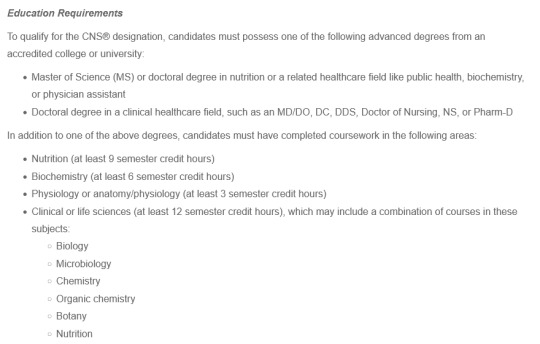
And this is what the school required for her MS program:
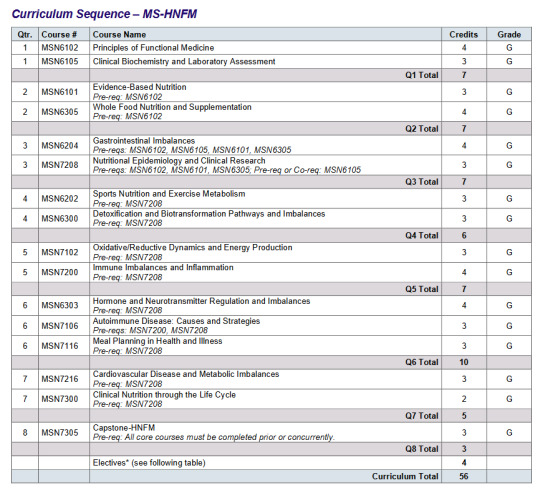
And given that she didn't have a science degree for undergrad it seems pretty likely that she wasn't doing anything close to what an undergrad nutrition program looks like:

For the record, here are the MS requirements for an MS in nutrition with a health and wellness emphasis at that same school:
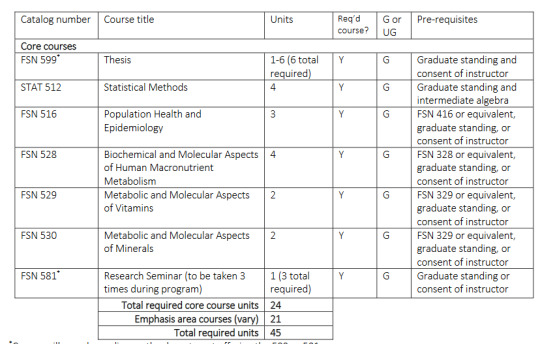
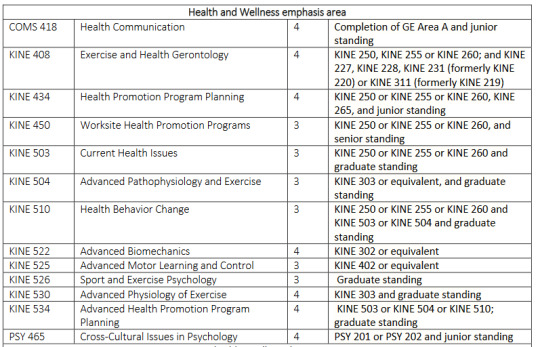
In order to get accepted to the MS in nutrition program in that school you either need to have a BS in nutrition or a BS in biology or chemistry and take all the undergrad level nutrition requirements ON TOP OF that BS.
I don't think that a theater degree and an MS from a woo-y correspondence school really count, even if you do pay $45k for your diploma.
If you go look at the requirements for any ACEND accredited school and compare them to the MS program from University of Western States it leaves UWS looking pretty shitty in comparison. Like, nowhere in her requirements is there a statistics class! Stats is required even for an associate transfer certificate in nutrition! EVEN AT THE 2-YEAR LEVEL FOR REAL NUTRITION DEGREES YOU HAVE TO DO STATS AND SHE DIDN'T HAVE TO TAKE A SINGLE STATS CLASS FOR HER MS. You will note that the cal poly MS program has one entire MS-Level class on vitamin metabolism and one entire MS-Level class on mineral metabolism for any of the three MS in Nutrition emphasis courses; her school required neither.
This shit makes me want to climb the walls.
I'm just going to start calling myself a nutritionist. California will let anyone call themselves a nutritionist, there are absolutely zero protections on that term and I can get myself a piece of paper for like three hundred dollars from a diploma mill that has some kind of bullshit accreditation.
Here are the programmatic accreditations her school has:

Compare with the Cal Poly programmatic accreditations (I cite cal poly a bunch because it was the program I was hoping to get into eventually so I researched it the most; that's where I got my BA, go broncos):
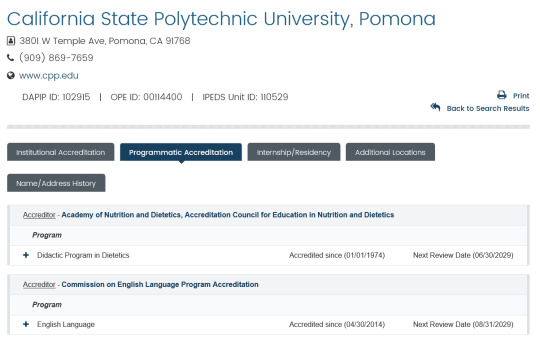
Note that the website for her school is listed with the department of education as wschiro.com because it was called Western States Chiropractic College until 2010.
Every time i dig into something like this it makes me want to stare into space for hours. No wonder college students are getting fucked on their loans and going to bullshit schools. No wonder everything is a scam these days. People bitch about credentialism but you know what maybe this lady is a CNS; sure, for some people that requires passing board certification tests, getting 1000 hours of clinical supervision, and becoming a Nurse Practitioner with real actual nutrition study from a solid program, but for other people it requires zero understanding of statistics, a theater degree, and three *whole* units of anatomy. Maybe she clears the bar on that one! She doesn't have the qualifications for an LDN in New York, she's not an RDN because she sure as fuck didn't take the classes required for a *VERY SERIOUSLY* protected title, but maybe you can be a CNS with an online diploma from the western states chiropractic college.
I fucking hate everything.
You know the whole reason I wanted to get a degree in nutrition was to yell about shit like this online, but fuck it. Fuck it, I'm a nutrition-isht because i live in california and I can say I am and who's going to check? Who's going to look up whether I took classes in public health or anatomy or the metabolism of micronutrients before they hire me to do corporate seminars on healing your relationship to food? I am legally allowed to do that so I might as well, right? If all I have to do is be charismatic and convincing I'm pretty sure I've got that down, actually, so who's going to check?
Nobody! Nobody is going to check and everything is a scam and I hate everything.
ANYWAY
The relationship between nutrition and inflammation and the relationship between chronic disease and inflammation are two different, complicated things that are difficult to point at and say definitively what the connections are.
I am of the opinion that any time you're getting deep into things like an anti-inflammatory, ketogenic, or PH-Balancing diet without a specific condition that calls for the avoidance of certain foods for very clearly scientifically reported reasons, you're dealing with a woo-woo biohacker who's looking to sell a diet plan.
The thing about nutrition science is that it seems like for most people the "answers" are pretty basic: eat enough food, get enough macro and micronutrients, eat a variety of food, avoid processed meats, try to eat more fruits and vegetables, get enough water, and stay as active as possible NOT for weight loss reasons but for metabolic health and joint/muscle maintenance. It's really, really, hard to sell that though, which is how you get people like Abra Pappa in 2013 writing out this bugfuck "Food and mood" handout with a midday snack that is so bonkers in the way the calories are distributed that I'm sitting down and doing math about it (it looks like about a third of the calories that day are supposed to come from the mid afternoon spinach, mint, cocoa nib, and coconut milk smoothie which is, as I said, bugfuck nuts).
It's hard to sell "please eat more fruits and vegetables, which is difficult because actually most places don't grow enough vegetables for the population's nutrition needs and it's cheaper to eat grains and industrially produced meat than it is to eat five cups of vegetables that you need to prepare daily and also maybe skip the bacon" but it's much easier to sell "five anti-inflammatory superfood milkshakes that will fill your belly and fight cancer" because it's packaging nutrition as a product and not as a massive systemic issue that happens to have very specific requirements for a large number of individuals who *do* happen to have disorders that are based on nutrition and inflammation (celiac disease! I've got one of them! Eating the wrong foods definitely causes inflammation in my body as the result of an autoimmune disorder! but that doesn't mean that the things that are inflammatory for me are inflammatory for everyone!)
Anyway I think like about 97% of workplace wellness programs are largely bullshit based, or at least import bullshit a lot of the time, and nutrition is a science that has, just, so much bullshit in and around it.
So I would take anything they say with a grain of salt, and hopefully less than 255% of your RDV of saturated fat (seriously that meal plan is ludicrous).
Side note: there is a subset of nutrition people who looked at the way that we got fat wrong in the 80s and flipped it and reversed it and went "actually you can have as much fat of any kind that you want as long as it is natural and you will have no issues" and this is how you end up with people on 100% natural clean keto diets who have cholesterol levels over 600. Abra Pappa recommends "clean/natural" eating and has taken continuing education on keto and has a recipe for a single-serving smoothie that calls for 8oz of coconut milk I think she's very much in the "'good' fat truther" camp (or at least she was in 2013 which is maybe why New York has a requirement for people to have some kind of nutrition certification for giving out nutrition advice and maybe she should have done that because she didn't even go to her bullshit "grad school" until 2017).
(We DID get fat wrong in the 80s and total avoidance of all fats is bad for you and there are 'good' fats that you should eat and everybody needs to eat some level of fat for proper nutrient absorption but even if you're only getting fat from nuts and avocados that's not going to prevent your arteries from forming plaques if you're having nearly triple the recommended daily value of saturated fat as part of your afternoon snack)
285 notes
·
View notes
Text
1d8 "Free" Fantasy RPGs To Replace 5e At Your Table
D&D 5e sure is a roleplaying game, and it's one that I have enjoyed a lot. However, that doesn't mean that I'd recommend it automatically for other people. This has many reasons, which I won't elaborate here. It has also shaped the perception of TTRPGs significantly thanks to its market dominance, and not in a good way.
5e has a reputation for being an expensive, complex game, and 5e players fear that other RPGs might just be the same. That it's too much of a hassle and too much of a financial burden to switch systems.
So, to help 5e players pick out a different system, I've made this handy 1d8 rolling table to help them pick a fantasy TTRPG with a combat component that they can try instead!

Let's now go through these eight nine RPGs and see what's up with them, right below the "Keep reading" section!
I'll be listing some metrics like the page count for the rulebook(s), the core resolution mechanic, how complex the game is in terms of character creation & combat, and how well-supported the game is by their publisher and the community-at-large.
1. Cairn
Author: Yochai Gal
Release Year: 2020
Cost: Free PDF, printed copies cost between $3 to $10 depending on the print quality.
Page Count: 24
Website: https://cairnrpg.com/
Resolution Mechanic: 1d20 Roll Under system for ability checks/saving throws, attacks hit automatically, "fiction-first".
Action Economy: Movement + one action per round.
Characters: Random character creation, class-less and level-less, advancement based on "Scars" (suffering damage that reduces your HP exactly to 0)
Setting: Implied. Low-magic European-style fantasy; mysterious woodlands.
Other Noteworthy Mechanics: Hit Protection and Ability damage instead of HP, Slot-Based Inventory.
Degree of Support: Very high. Available in fifteen languages (e.g. Spanish, Russian, Chinese, and German); full rules text is under CC-BY-SA 4.0; multiple published third-party adventures & supplements available; some official bonus material (e.g. bestiary, magic items/relics, and spells) is available for free on the website.
Addendum: An expanded 2nd Edition is currently on Kickstarter (ends April 26th 2024); Cairn is legitimately easy to learn, however the Hit Protection system and the connected Scars system is a very different abstraction to health and advancement compared to 5e.
2. Cloud Empress
Author: worlds by watt
Release Year: 2023
Cost: Free PDF of the rulebook and the creator-written sample adventure "Last Voyage of the Bean Barge", $20 for the print edition of the rulebook, $12 for PDF supplements, $25 for print + PDF supplements; free solo rules also available as PDF only.
Page Count: 60
Website: https://cloudempress.com/
Resolution Mechanic: d100 Roll Under system for stat checks/saving throws, critical successes or failures on doubles (11, 22, 33, etc.), 5e-style advantage/disadvantage, attacks generally hit automatically.
Action Economy: Two actions per round with no free movement.
Characters: Semi-random character creation, four classes ("jobs"), no rules for character advancement in the ruleset.
Setting: Specific. "Ecological science fantasy" heavily inspired by Hayao Miyazaki's "Nausicaä of the Valley of the Wind"; costly magic, giant insects, dangerous mushrooms; only human player characters.
Other Noteworthy Mechanics: Damage points culminate in Wounds; Wounds and Stress as ways to track your character's physical and mental state; slot-based inventory system.
Degree of Support: Low-ish. Several official supplements exist, however third-party material is very sparse. May improve due to the recent establishment of a Cloud Empress Creators Fund, has a simple 3rd party license system.
Addendum: A supplement, "Cloud Empress: Life & Death" is currently on Kickstarter (ends April 26th 2024, yes, the same day as Cairn 2e) and as a disclaimer I even backed that current Kickstarter; Cloud Empress is built on the engine of the sci-fi horror RPG "Mothership"; clearly built for one-shots and short campaigns; has a wonderful resting system that encourages roleplay between players.
3. Iron Halberd
Author: level2janitor
Release Year: 2023
Cost: Free PDF of the rules; no print option available.
Page Count: 60
Website: https://level2janitor.itch.io/iron-halberd
Resolution Mechanic: 1d20 + Bonus Roll Over system against difficulty or armor rating, however most non-combat-related actions follow a fiction first approach without dice rolls.
Action Economy: Movement + one action per round.
Characters: Semi-random character creation, class-less but there are four different "gear kits" that nudge your character towards certain archetypes, levelling up with XP.
Setting: Essentially non-existant. General European fantasy with magic, gods may or may not exist/shape the world, various fantastic ancestries included.
Other Noteworthy Mechanics: Includes rules for building strongholds and maintaining warbands; slot-based inventory with a durability mechanic.
Degree of Support: None. The game is intended to be relatively compatible with other OSR content and the creator suggests using adventures made for the D&D retroclone Old-School Essentials if you wanna use pre-published ones. An official introductory adventure, "Sea-Spray Bay", is apparently in the works. No 3rd party license available, as far as I know.
Addendum: One thing about Iron Halberd I like especially is how it uses random tables for generating equipment. Most of the equipment is listed in a numerical order by category, and the various gear kits include references on different rolling formulas for those equipment categories. For example someone taking the "soldier's kit" rolls twice on the d20 Weapons table and takes their preferred pick, while someone taking the "sage's kit" only rolls a d4 on that table.
4. Mausritter
Author: Isaac Williams
Release Year: 2020
Cost: Free PDF of the ruleset available; box set with the rules and several goodies including an adventure costs $55; additional box set + PDFs containing eleven official adventures costs $55 (or $20 digital-only).
Page Count: 48
Website: https://mausritter.com/
Resolution Mechanic: 1d20 Roll Under system, 5e-style advantage/disadvantage, attacks always hit.
Action Economy: Movement + one action per round.
Characters: Random character creation, class-less, levelling up with XP.
Setting: Vaguely specific. You play as mice and everything is related to mouse-size; cats are the equivalents of devils or dragons; humans exist as a setting background but may or may not be present in a campaign.
Other Noteworthy Mechanics: Includes rules for recruiting warbands; slot-based inventory with a durability mechanic.
Degree of Support: Very high. Several official supplements exist, as well as loads of content, be it adventures or supplements, made by other creators. Available in seven languages (all of them however are European). Has a simple 3rd party license system.
Addendum: Mausritter uses the phrase "adventure site" instead of dungeons. On the website a free adventure site generator is available, as is a digital tool that can be used to generate your own item cards for the slot-based inventory system.
5. Maze Rats
Author: Ben Milton
Release Year: 2017
Cost: $4.99 for the PDF, no print option regularly available.
Page Count: 32
Website: https://questingbeast.substack.com/
Resolution Mechanic: 2d6 + Bonus Roll Over system; advantage system that uses 3d6 drop the lowest + Bonus.
Action Economy: Movement + one action per round.
Characters: Semi-random character creation, class-less but instead there are character features (e.g. spell slots or attack bonuses), levelling up with XP.
Setting: Essentially non-existant. Magic is very irregular (s. the section below), but otherwise it implies a vaguely European fantasy setting.
Other Noteworthy Mechanics: Spells are randomly generated each adventuring day and spell effects are negotiated between the GM and the spellcasting player; includes several fantastic d66 tables that can be used to randomly generate worlds.
Degree of Support: Decent. The rule text is licensed under CC BY 4.0 and unofficial translations are available. Some third-party content has been made specifically for the game.
Addendum: The only purchase-only game on this list. However "unofficial" distribution of the PDF is very common. Also this is the oldest game on the list. Ben "Questing Beast" Milton is a prolific OSR blogger and runs a YouTube channel on the OSR. Great dude.
6. Sherwood - A Game of Outlaws & Arcana
Author: Richard Ruane
Release Year: 2022
Cost: Free quickstart PDF titled "Sherwood - A Quickstart of Outlaws" available; digital rulebook costs $7.50 and the print edition (including PDF) costs $15.
Page Count: 25 (Quickstart), 32 (Rulebook)
Website: https://www.r-rook.studio/
Resolution Mechanic: 2d6 + Bonus Roll Over system for skill checks (including attacks), 2d6 Roll Under system for saving throws; advantage & disadvantage system that involves rolling 3d6 and using the higher/lower of the two results; almost all rolls are player-facing
Action Economy: "Conversational", assumption of movement + action.
Characters: Largely choice-based character creation. Combine two (of six) background abilities with the benefits of seven different careers. Big focus on interpersonal relationships during character creation. Limited character advancement takes place during downtime.
Setting: Specific. Takes place in a fantastical version of 13th century England, with fey and magic coexisting with outlaws and crusaders.
Other Noteworthy Mechanics: The group of outlaws possesses two shared resources (Resources and Legend) that can be spent to gain certain benefits; spellcasting is divided into two categories: arcane talents and sorcerous rites, with the former being immediate and the later taking significant time; slot-based inventory.
Degree of Support: None. No further publications exist for the game and while it is published under the CC-BY 4.0 license, no third-party content exists as far as I know. It does include a guide on how to convert D&D and Troika (N)PCs into Sherwood characters, as well as three adventure seeds (one in the Quickstart, two in the rules), which is at least something.
Addendum: Might just be the game on this list that encourages the most roleplaying; the character sheet is sadly very provisional-feeling and the Quickstart feels outdated compared to the finalized rulebook.
7. The Electrum Archive
Author: Emiel Boven
Release Year: 2022
Cost: Free Rules PDF available, zines cost $12 as digital PDFs or $24 as print + PDF combos; the first zine contains the entire contents of the Free Rules PDF
Page Count: 26 (Free Rules), 72 (Issue 01)
Website: https://www.electrumarchive.com/
Resolution Mechanic: 1d10 Roll Under system, attacks always hit.
Action Economy: Movement + one action per round.
Characters: Largely choice-based; three archetypes roughly corresponding to fighters/rangers (Vagabonds), rogues (Fixers), and spellcasters (Warlocks); player characters are presumed to be human; levelling up with XP.
Setting: Specific. Mechanics heavily tie into the lore; humanity has abundant access to minerals but requires a rare substance known as Ink to operate certain pieces of tech (like guns) and cast spells but cannot produce Ink themselves; spirits of various sorts can be foes, targets of worship, or sources of power.
Other Noteworthy Mechanics: Uses a spellcasting system for the Warlock archetype that's heavily based on the one used in Maze Rats, as in it uses randomly-generated spells whose effects are negotiated between the player and the GM; slot-based inventory with a durability mechanic.
Degree of Support: Minimal. The game consists out of the free rules and (soon) two zines; a third party license exists but content produced under it is very rare.
Addendum: I need to disclaim that I recently backed the Kickstarter campaign for the second zine for this game; the free rules feature wrong page numbers in its table of contents which is unfortunate; The Electrum Archive uses incredibly simple stats for NPCs which makes creating new ones based on other games rather simple.
8. Shadowdark RPG
Author: Kelsey Dionne
Release Year: 2023
Cost: Free player and game master quickstarts exist as PDFs and are available in print for $19, the core rules cost $28 in PDF form and $57 in a print + PDF bundle
Page Count: 68 (Player Quickstart Guide), 68 (Game Master Quickstart Guide), 332 (Core Rules)
Website: https://www.thearcanelibrary.com/
Resolution Mechanic: 1d20 + Bonus Roll Over system, 5e-style advantage/disadvantage, natural 1s are critical failures and natural 20s are critical successes.
Action Economy: Movement + one action per round.
Characters: Largely choice-based; players have a fantasy ancestry and a class; levelling up with XP; class progression largely random.
Setting: Vague. General (dark) western fantasy conventions apply; alignment is a force in this universe and a sample pantheon is provided; the most potent enemies in the rules are named individuals that fit classic TTRPG monster types; illustrations and lore snippets have recurring motifs.
Other Noteworthy Mechanics: The key mechanic of Shadowdark is how the game handles light, namely that light sources are tracked in real time (i.e. a normal torch lasts 1 hour), which increases tension; slot-based inventory; has a 0th-level character creation option using an eliminationist "Gauntlet".
Degree of Support: Fantastic. Several official supplements and offically sanctioned digital tools exist; lots of third-party content available under a generous third-party license.
Addendum: Definitely the most similar game to 5e on this list besides the next entry; very robust mechanically and the Core Rules features extensive lists of magic items, monsters, and spells; also for early play giving your players only access to the quickstart is a totally valid choice; and finally, before Dionne made Shadowdark, she made 5e adventures for years and it shows (affectionate).
9. Pathfinder
Authors: Logan Bonner, Jason Bulmahn, Stephen Radney-MacFarland, Mark Seifter
Release Year: 2019 (initial release), 2023 (remaster)
Cost: Free and comprehensive SRD available via the platform Archives of Nethys, free "Pathfinder Primer" abridged rulebook available via the Pathfinder Nexus (powered by Demiplane), Core books are priced $20 for PDFs and $30/$60 for print as a softcover/hardcover; a Beginner Box set with shortened soft-cover rules costs $45
Page Count: 464 (Player Core), 336 (GM Core), 376 (Monster Core), 160 (Combined Beginner Box Softcovers)
Website: https://paizo.com/pathfinder
Resolution Mechanic: 1d20 + Bonus Roll Over system, 5e-style advantage/disadvantage, four degrees of success based on result compared to target number.
Action Economy: Three action points per round; various actions may require more than one point; every character can use one reaction per round of combat.
Characters: Choice-based; players first pick an ancestry and a background and a class (the ABCs) and then tend to have meaningful choices after each level-up; levelling up with XP.
Setting: Important. Golarion, the game's setting, is a world that has been long in development and it shows; powerful magic and influential gods; very clear notions of what the societies of the various peoples of the world are like and how they should behave.
Other Noteworthy Mechanics: Balance between character classes and reliable combat challenge calculations are an important design goal; weight-based inventory system; archetype system for "multiclassing".
Degree of Support: Fantastic. Loads of content gets regularly produced by the game's publisher Paizo; the Pathfinder Infinite program (similar to D&D's Dungeon Master's Guild) provides lots of lore-compliant third-party content; uses the ORC third-party license for content produced outside of the Pathfinder Infinite program. Translations into other languages available but Paizo does not provide a comprehensive list of available languages (only German and French confirmed after brief personal research).
Addendum: The most popular and commercially successful of the listed games; but also by far the most complicated, though it is easier to GM for specificallty than 5e; also I dislike how certain feats create situations where fairly mundane actions get mechanics through these feats instead of being things you can generally do; anyway the reason why it's a 9 on a 1d8 table is because if you wanted to try out Pathfinder 2e you already would have and because while Paizo is better than WotC it's still a flawed big company.
...
So this was an exhausting little project. I hope you found this helpful and I hope you give at least one of these games a shot! A follow-up to this post is not out of the cards, but I don't plan on one.
Before we go, have this poll about which of these systems you're most looking forward to try! Shame it can only be open for one week...
#thehomelybrewster#dnd 5e#dnd#indie ttrpg#tabletop roleplaying#ttrpg community#Cairn#Cloud Empress#Iron Halberd#Mausritter#Maze Rats#Dungeons and Dragons#Sherwood#The Electrum Archive#shadowdark#pathfinder
147 notes
·
View notes
Text
Also preserved on our archive
By Julia Doubleday
This week, the head of the National Institute of Allergy and Infectious Diseases (NIAID), Jeanne Marrazzo, sat down with Stat News to discuss succeeding Anthony Fauci amid public concerns over ongoing H5N1 and mpox outbreaks.
The conversation yielded a staggering admission from Dr. Marrazzo as she downplayed risks of a bird flu pandemic:
"Can I make a quick digression? We recently had a long Covid [research] meeting where we had about 200 people, in person. And we can’t mandate mask-wearing, because it’s federal property. But there was a fair amount of disturbance that we couldn’t, and people weren’t wearing masks, and one person accused us of committing a microaggression by not wearing masks. And I take that very seriously. But I thought to myself, it’s more that people just want to live a normal life. We really don’t want to go back. It was so painful. We’re still all traumatized. Let’s be honest about that. None of us are over it."
This jaw-dropping justification is perhaps more jaw-dropping given that Dr. Marrazzo was not asked to comment on the meeting but broached the topic herself. Her statement clarifies that she and other public health officials don’t wear masks because they find basic disease control to be psychologically triggering. Let’s unpack the layers of anti-science, anti-patient, anti-public health and anti-reality rhetoric - not to mention rancid ableism- in this statement.
First let’s consider the context. Dr. Marrazzo is not referring to masking generally, although any public health official who is informed about the cumulative risks of COVID infections like long-term disability and brain damage should be. She is specifically justifying a refusal to mask at a Long COVID research meeting.
The RECOVER-TLC meeting in Bethesda at the end of September gathered hundreds of scientists, medical professionals and patients to discuss Long COVID. What is Long COVID? Let’s use the definition offered in a recent review article published in Nature Medicine:
"Long COVID represents the constellation of post-acute and long-term health effects caused by SARS-CoV-2 infection; it is a complex, multisystem disorder that can affect nearly every organ system and can be severely disabling. The cumulative global incidence of long COVID is around 400 million individuals, which is estimated to have an annual economic impact of approximately $1 trillion—equivalent to about 1% of the global economy. Several mechanistic pathways are implicated in long COVID, including viral persistence, immune dysregulation, mitochondrial dysfunction, complement dysregulation, endothelial inflammation and microbiome dysbiosis."
In other words, a quite serious, quite common outcome of SARS-COV-2 infection with a multitude of physical markers, poised to drastically disrupt world economies. Even after vaccination, Long COVID risk remained around 3-4% in a recent study. Long COVID can follow any COVID infection and affect anyone, and risks are known to be cumulative. That means reinfections continue to raise your risk of developing Long COVID. COVID is an airborne virus, transmitted by sharing air with infected individuals.
To debunk several misapprehensions, there is no special kind of person who gets Long COVID. There is, conversely, no special, “healthy” kind of person who cannot develop Long COVID. A person who has had COVID three times and feels okay is not now “immune” to Long COVID. No one has long-term immunity to COVID, and vaccinations can reduce the risk of, but not entirely prevent, COVID infections. COVID spreads in our communities at high rates year-round, with late-September wastewater data showing about half a million cases per day, or one in 57 Americans infected.
But experts gathering at a meeting about Long COVID should be well aware of all of the above.
In year five of the ongoing COVID pandemic, we have plenty of tools to ensure that a meeting- even an indoor, in-person meeting- remains safe for all attendees. Mitigation measures that would have reduced the risk of COVID transmission include adequate ventilation, CO2 monitoring, HEPA filtration, on site testing, Far UVC technology, and- of course- the use of high-quality, respirator style masks. While patients were easy to identify in respirators, many of the government officials and scientists who spoke plainly chose to make the space more dangerous for people with Long COVID.
The Sick Times noted that the lack of accessibility, the risk of reinfection for patient attendees paired with a poor-quality livestream, undercut the meeting’s message of urgency and care around the treatment of Long COVID.
Meetings among experts could easily serve as a gold standard for airborne disease mitigation, modeling how to prevent infections and therefore, inevitably, more Long COVID cases. Airborne disease mitigation could and should be the first line of defense against Long COVID; it is the one and only tool we have that is proven to be effective vs the little-understood disease. This is especially important at this early stage, when treatments are so limited, with no proven path to recovery and certainly no “cure”.
But Dr. Marrazzo and her colleagues, instead of focusing on how to halt the spread of COVID at their Long COVID research meeting, are focused on how to preserve their psychological denial that they, personally, are special people who are not at risk of developing Long COVID.
There is no scientific basis for this idea; it is the fantasy of the crowd, the collective delusion of people much less informed than they are, who are desperate to resume pre-pandemic life and have been fed years of propaganda about COVID’s supposed harmlessness. To participate in this public delusion rather than attempt to pop it is a social decision, not a scientific one. Marrazzo’s statement admits as much.
Marrazzo notes that there was a “fair amount of disturbance” that researchers continue to refuse to mitigate COVID while claiming to want to address the Long COVID crisis. She goes on to state that “one person” accused the group of “committing a microaggression” by not wearing masks, obliquely referring to longtime HIV/AIDS and COVID activist JD Davids. But Davids was far from the only activist angry with the lack of mitigations.
Long COVID patients have been exceedingly clear, for months and years, about their ongoing anger that even doctors explicitly engaged in COVID work refuse to practice mitigations. This failure to mitigate is violence that very literally harms, disables and kills people.
Long COVID patients participating in medical studies like this one at Stanford have been forced to drop out of critical research projects due to staff’s refusal to mask, take airborne precautions, and provide protection from reinfection in dangerous healthcare facilities.
Twitter user Michael Coyle stated in February 2023 that, “my partner and I have both dropped out of a multi-decade (longitudinal) health study, and I dropped out of a COVID transplant study because they weren't taking airborne precautions.”
In July of this year, Jordan Crane wrote, “I have had to withdraw from the Stronger study run by @georgeinstitute in collaboration with @monashuni, 11 months in. LC patients should not be exposed to reinfection during trials aimed at helping those with LC, but that's exactly what @monashuni are doing.”
This is not only immoral, it is bad science; if research teams reinfect Long COVID patients, as well as potentially infecting control subjects, any purported results of said studies would be corrupted and invalid.
If the public at large can claim ignorance- they have, after all, been repeatedly told that risks of COVID infection are minimal and comparable to other common viruses- public health officials have no such excuse.
And why is it, by the way, that the public is so certain that repeated, continual infection with COVID-19 will not harm them? Could it have something to do with the fact that researchers, doctors and public health officials continue to appear in public unmasked, clearly communicating that continual reinfections are safe and nothing to fear?
NIAID officials and other health professionals masking at a large, indoor meeting serves multiple critical public health purposes: one, it avoids spreading the virus, which would create new Long COVID cases. Two, it conveys to the public that SARS-COV-2 infections are not harmless, that Long COVID is serious and can develop from any case of COVID. And three, it expresses that prevention is the most vital- and really, the only- tool we currently have to effectively fight Long COVID.
Marrazzo states that she took public criticism of the lack of masks “seriously”. She then goes on to provide an entirely unserious response, dismissing said criticism by whining, “people just want to live a normal life.”
What, exactly, is meant by this? What population is seen as “people”, who is excluded, and what is “normal” in the construction of this odd sentence?
Quite clearly, Marrazzo and her colleagues do not want to live the life Long COVID patients and other disabled people are now forced to live- a life of continual infection avoidance. They do not want to wear masks, be associated with those who wear masks, be seen as “disabled,” as “other,” as “sick,” “vulnerable” or “abnormal”. They want to be normal- in other words, abled and ableist.
They do not want to be stigmatized, like the abnormal patients they claim to serve.
They do not want to stand out from the crowd of abled people who are healthy enough to tolerate another COVID infection- the “normal” people who aren’t annoying or weird or old or sick or dying.
Like normal (abled) people, they want to spread COVID in peace, while pretending they do not know the damage it inflicts. Like normal people, they want to use conferences as an opportunity to have their photos taken and network over cocktails. Like all the normal people who continue to exclude Long COVID patients from public spaces, these officials, too, will not be making it any easier for sick people to be safe outside their homes. Like normal people, they are going to operate under the assumption that Long COVID and disability cannot happen to them.
Because no study, no statistic, no patient, and no research can educate a medical professional out of ableism, the unmasked people who attended this meeting have all the information in front of them, and yet cannot understand that they, too, are at risk of disability.
Marrazzo goes on to say that she and her colleagues “don’t want to go back” because “it was so painful.” What was? Disease control? The thing public health literally exists to do? Because COVID is still very much with us - 1 in 57 Americans currently positive, you recall? Long COVID patients, disabled people, and people who are avoiding infection do not have any choice but to practice mitigations, and to do so with extreme strictness, given the lack of any coordinated disease control coming from the top. Every day, this task is made harder by the abdication of public health leaders who prioritize the comfort of the most privileged over the safety of the most vulnerable.
Patients are not merely harmed by the superspreader events Marrazzo and her colleagues continue to hold- although they and surrounding communities certainly are harmed by the spread of the virus itself- they are also harmed by the blasé attitude of officials which leads the families and friends of Long COVID patients to doubt the seriousness of their condition, or the need for precautions. Long COVID patients are unsafe in their own homes because masking has been so stigmatized that their own spouses, parents, and children will not stop reinfecting them.
If the head of the NIAID declares that she cannot wear a mask because she wants to be “normal,” what hope does an ill patient have to convince her husband to buck the social, political and professional pressure he faces in public life to consistently mask? When the very public health leaders who should be stressing the importance of tools that prevent reinfections are stigmatizing them, framing them as weird, abnormal and scary?
Lastly Marrazzo insists that researchers cannot wear masks because “we’re still all traumatized,” and “none of us are over it.”
A moment for the absurdity of the statement that you cannot use a safety tool that very literally saved lives during a traumatic event because you’re psychologically triggered by it. It is akin to saying you can’t wear a seatbelt because you were in a bad car accident and people died. Go to therapy. Wear the seatbelt. Definitely do not project your personal psychological problem with seatbelts onto the people fighting for auto safety.
Watching people get infected and die during a pandemic is certainly traumatizing. But…masks didn’t do that. SARS-COV-2 did. The same virus you’re spreading when you refuse to acknowledge and mitigate it, despite being well-aware of the long-term and cumulative harms of continual reinfections. By claiming the mask is triggering your trauma by reminding you of COVID, you are essentially saying that you exist in a state of utter denial that COVID currently surrounds you.
It’s doubly astounding to dare use the word “trauma” to describe the relationship of health officials toward masks while dismissing the trauma of patients being gaslit, ignored, further disabled, and forcibly reinfected by society at large- all while those who claim to want to heal them participate in stigmatizing the best prevention tool available.
Long COVID patients are traumatized by their illness, their abandonment, their social stigmatization, the relationships they continue to lose, in many cases the loss of careers and homes, and their utter exclusion from public life. Public health officials are not “traumatized” by having to mitigate the disease that inflicted and continues to inflict all of those actual traumas.
There is a social and cultural problem within public health institutions regarding airborne disease control. Broader social norms of ignorance and denial of the virus’s harms- which were themselves seeded by mainstream politicians and media, whose rhetoric was in turn cribbed from far-right libertarian thinktanks- have been absorbed into medical and public health settings.
The stigmatization of masking certainly began on the far right, but as Biden’s administration sought to normalize recurrent COVID reinfections and push people “back to normal,” Democrats joined in on the political project to socially destroy the tool humans would have killed for in centuries past. To be able to make use of respirators is not a burden or traumatic- it is a gift, not to mention a privilege that many around the world cannot access. People gathering for a Long COVID meeting should be all the more grateful, knowing full well the outsize outcomes such a small device can prevent.
It is a shame, a failure, and a shock to hear a public health official with so much power contribute to anti-mask sentiment amidst spreading mask bans which will kill disabled people. At a time when public health should be educating the public about the importance of mitigation, stressing the value of these tools, people in power are declaring masks weird and abnormal, contributing to further stigmatization of those who need these devices to even enter public spaces.
It is shockingly anti-science to hear a public health official disparage disease control technology at the altar of fascist social norms that seek to disappear disabled people from public entirely.
Dr. Marrazzo’s words reveal that she does not identify with Long COVID patients, nor does she see them as “people” who deserve to be a part of “normal” life. Only the able-bodied- those who have not yet been disabled by COVID- have a right to “normal,” which is defined by the disappearance of accessibility, disease mitigation, and medical devices. Trauma is not what has been and continues to be inflicted on those most harmed by COVID, it is what is experienced when a doctor sees a mask and, for just a second, remembers what it felt like to be scared, to feel vulnerable, to feel like maybe illness and death weren’t things that come only for the weak, the lesser, and the old.
But those days are over.
#long covid#covid conscious#mask up#covid#pandemic#covid 19#wear a mask#public health#coronavirus#sars cov 2#still coviding#wear a respirator#covid is airborne#covid isn't over
66 notes
·
View notes
Text
THEME: Bittersweet Futures
Today’s recommendation is all about games that bring us into speculative futures, from the highly plausible to the completely fantastical. You’ll find giant bugs, machine animals, and eco punk anti-fascists in this collection of games.
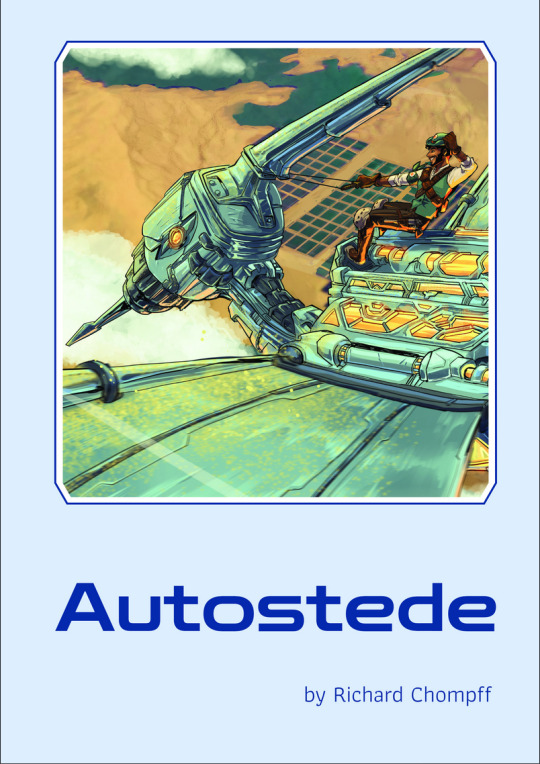

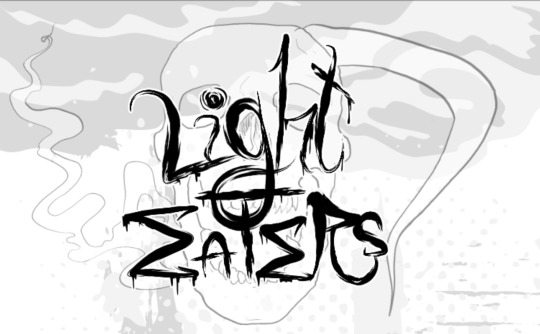
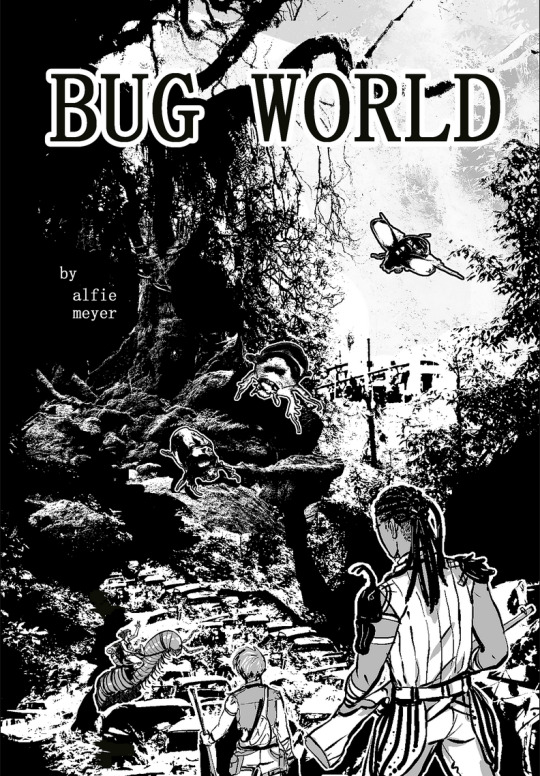
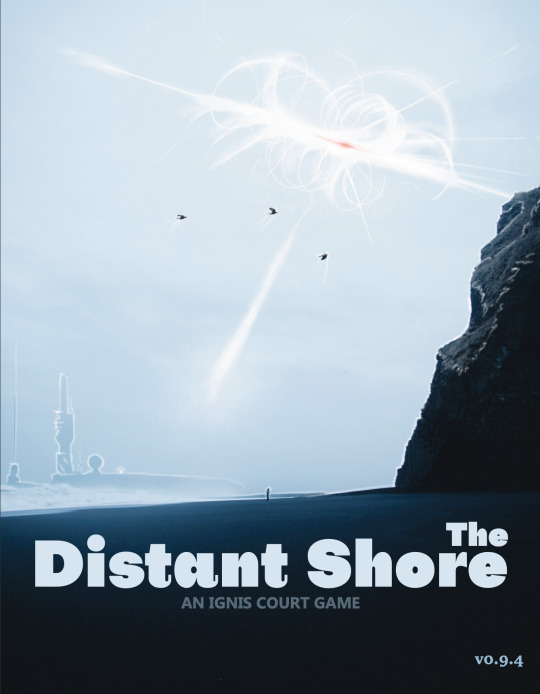

Autostede, by Kettle and Clock.
You are a Drover. Your mechanical companion, your “Autostede,” is all that keeps you safe against the deadly plants and roving wild stedes in the wilderness between towns. And you keep them running. Together, you can take on the world, which is good because the world is a dangerous place and its your job to keep the small, separated towns safe and connected.
Autostede is a tabletop roleplaying game Illuminated by LUMEN in which you play as Drovers, the few who choose to modify their Autostedes into weapons capable of surviving the harsh wilderness between towns.
Actions taken with the ‘stede interact with their wishes, turning every roll into an ongoing conversation with your companion, where you come together to find the best solution to a problem.
Autostede feels very much inspired by Horizon Zero Dawn, with a bit of a western twist. Character creation involves two parts. First is Drover Creation, which is attached to your mask, an air filtration device that also grants special skills and points towards one of the three main stats as a strength for you. The second part is your Stede, a character sheet with a 4-section hex grid, with each hex representing attribute bonuses, passive abilities, and modules that can serve as weapons, power generators, extra limbs, and so on.
While the game is based in LUMEN, there’s definitely pieces of it that feel unique, such as your mechanical steeds, and the way skills are used in the game. Each character has access skills that are generally useful, but also can do things that feel a little unhelpful, such as “bewilder” or “consider”. These are Recovery skills; most skills are Spent when you use them and can’t be used right away again after you’ve used them, but Recovery skills can be used to refresh your options, in a sense. These balances of skills feels like a great way to introduce pauses into what might otherwise feel like a hectic game, encouraging your characters to demonstrate weaknesses or narrative moments that are more about the character than what the character is doing.
If you love building custom mechs but still want a lightweight set of rules, I definitely recommend Autostede.
Paratype, by megasomamars.
"The world ended long ago. It doesn’t matter how; pollution, nuclear fallout or some cataclysmic event, no one really knows. What they do know is that it didn’t take long for the bugs to show up. Giant insects terrorize what remains of humanity, leaving survivors scrounging for what little resources they can get.
For most, life in the wasteland has become fast, dangerous and insectile. Thanks to science, some individuals have even found a way to splice their DNA with that of these mutant invertebrates to develop strange new adaptations of their own. These hybrids are humanity's newest area and last hope. Now all that’s left is to survive."
Paratype is an interesting little hybrid of a game. The basic rules involve rolling to hit a difficulty level, with rules for both advantage and disadvantage. However, the game also includes a special roll called the Risk roll, which involves rolling 2d20 and taking the result that is the farthest from 10. This is great for situations where you want either a fantastic success or a deadly failure.
Characters have four general stats, with sub-stats that represent specialties, which reminds me of World of Darkness or Genesys games. The inventory system takes inspiration from Mausritter, consisting of hexagonal shapes that can be filled with different size items. If you buy a backpack, your inventory expands!
Finally, the Health of your character is measured in both Hit Points and Stress points. You lose hit points, and gain Stress points. Running out of HP = death, while hitting max SP leads to your character going “feral”, which makes your character virtually unplayable. I think the explanation in the lore for this is a DNA splice that has changed your character to make them better survivors. I also feel like it carries echoes of Trauma in Blades in the Dark, or Corruption in Urban Shadows, except that in Paratype, SP can be healed a little easier.
Light Eaters, by blindink.
An interstellar encounter brought a Light to the earth, corrupting reality and leaving humanity in ash. The last city stands against the inevitable, remnants of the pre-existing mortal Authority desperately clutching for power. Degenerates stalk the wasteland with insatiable hunger, encircling the dying carcass of order. You are the misfits, the should-not-bes, the first and last signs of apocalypse. Born from the end, you are Light Eaters. In your wake, nothing will ever be the same.
Light Eaters is a campaign-style role-playing game for three or more players, telling the story of the last city hurtling towards an inevitable end. Players take the role of Light Eaters, near immortal post-human beings watching helplessly as humanity as we know it comes to an end, fighting back against the Authority and the effects of their own Degeneration. They decide for themselves what matters, and what they take with them into this new world.
Light Eaters uses 6-diced dice as resources, which you can place on slots in 4 different move categories in order to set yourself up for action scenes. You can only assign 4’s, 5’s and 6’s: 2’s and 3’s can be re-rolled, while 1’s inflict conditions or allow something called Chaos to rise. Your characters can work as a team, sharing dice and distributing Conditions evenly, and you can also oppose one-another, attempting to disrupt each-other’s rolls by spending personal resources.
The general game play appears to consist of an over-arching problem, with various levels framed as scenes. Each scene will include an obstacle, often in the form of opposing NPCs. These NPCs carry Facets that can be damaged through the actions of the PCs, and each Facet consists of descriptive words that represent powers and personalities that will affect the NPC’s choices. Over time, Chaos will build, triggering new events every time you reach a new level. When Chaos reaches level 4, the game is over; narrate what happens based on the events that have happened so far.
This game looks like a great option for players who want stakes that raise higher and higher, and plenty of ways to interpret their special powers; You can get a taste of this game by checking out an ashcan scenario, called Light Eaters: Thunderfuck, a scenario with pre-generated characters and a problem that each character is motivated to solve.
Bug World, by alfie meyer.
Maybe the apocalypse could have been averted, but it wasn’t, and here we are, in a brand new world. this isn’t your cold, nuclear winter, sparse and dead kind of post-apocalypse. the end sent the world on a new course, brimming with life - just not quite as much human life as before. ok, barely any. in the super oxygen-rich atmosphere of the earth today, insect life has thrived. it only took a few decades for bugs to reach incredible sizes, and now, about a century-and-a-half after the disaster, gargantuan insects are a normal sight.
from a ladybug the size of a dog, to millipedes that might as well be trains, to horned beetles with skeletons big enough to use as shelter. bugs are huge and they are everywhere. the remaining humans have domesticated some, trained others, made wary peace with some intelligent groups, and carved themselves out sections of the world to live.
Bug World is a Powered by the Apocalypse game in that mechanically, it carries a lot of the hallmarks: playbooks, stats that add modifiers to moves, and graded success. It’s also literally a post-apocalypse: the world is broken and dangerous, and the players are scavenging to survive and learning about the past in the process. However, I think in comparison to Apocalypse World, the moves and goals of the characters are less integrated; in Apocalypse World, a character is motivated by lack of resources to intimidate, insinuate, and barter with the other inhabitants of their settlement for more. In Bug World, you are instead motivated to work together to go searching for the things you need to survive.
The Distant Shore, by The Ignis Court.
Transhumanity's empire has been sundered. The Machine Minds they had relied too heavily upon have left them, and Earth too has disappeared. The Settlements across the Sol System have been left scattered and isolated in the black. As megacorp, fascists, and Psionic Tyrants begin movement to take advantage, an entity known as the Distant Shore has manifest from Ceres, and its caustic light has begun tugging at the psyche of every thinking being.
Lucky then that the Machine Minds saw fit to offer you a parting gift: an Ancile, fragment of the Machine Minds. Their nature symbiotic with your own names you Psion, and one capable of great and terrible power.
This is the Distant Shore.
The Distant Shore is a very interesting example of how your characters’ backgrounds and the lore of the game are built into the process of character creation. For example, you must choose a character background that will place you on the outside of the system of power, and each character must also contain an Ancile that gives them incredible power while also makes them dangerous.
The system itself uses d20’s, with a 10 as a threshold for success. However, how well you succeed is determined by your character’s skills - if you are Untrained in a skill, a success is still partial, and if you are Trained in a skill that aligns with your background, you cannot fail. Your training also determines critical points of your backstory. For example; if you are Trained in Engage, name a fight you didn’t win and what it cost you. I love that these kinds of tie-ins ensure that the players will learn what they need to know about the setting without overloading them with information.
The designer also has an adventure document for this game called No More Tourists, if you need a place to start.
Why We Fight, by Stop, Drop & Roll Games Studio. Why We Fight is a solarpunk narrative TTRPG where you play a crew of eco-punks fighting fascism to build a brighter, greener future.
Your Crew will journey through the remains of a post-civil war country to save lives, reclaim nature, create a community of compassion, and beat back the oppressive forces that threaten the chance for a new start.
But most of all, it’s about learning about each other, and the things that inspire us. It’ll take close co-operation and a diverse set of skills, but together, we can make change!
Why We Fight can be played solo and GM-less, with the elements that would normally be GM-ed attached to randomizers to help the group construct missions together if that is what you so desire. The game is focused on a post-apocalypse that highlights many concerns about the consequences of an increase in fascist-leaning governance, which means it isn’t necessarily escapist, but it might give your table the space to talk about elements of the future that cause them anxiety. It might also give you a chance to demonstrate agency in situations where you normally don’t.
Character specialties are distributed among mental, physical and social categories, and feel pretty standard when it comes to a list of character skills. The group works together to construct a mission, using dice to determine elements such as opportunities, locations, and various situations that may cause complications. Play happens over the passing of a day, with different modifiers attached to specialties according to the time of day. I think this might be interesting way to add complexity that encourages strategy when it comes to plotting out your next moves.
Finally, travel between conflicts and other scenes serves to flesh out the world and add depth to your character’s experiences, using roll tables to describe how small changes in the world give your characters reasons to hope.
For Further Reading...
Post Apocalyptic Community Recommendation Post
Nuclear Radiation Recommendation Post
Fallout Recommendation Post
#bittersweet futures#post apocalyptic#indie ttrpgs#tabletop games#game recommendations#dnd#indie ttrpg
65 notes
·
View notes
Text
Dropout Customization
Due to some questions about MC customization, I have decided to compile all the physical and personality aspects that are selectable about the Dropout.
A reminder that this is all subject to change and that new things may be added (or deleted). Feedback and ideas to further develop MC are encouraged.

Main Ideas
Name Surname Nickname
Sex, Gender, Pronouns (it's possible to customise them), Breast/Pecs, Penis/Vagina (If MC is transgender, their transition takes place while they're away) Title (Ms. / Mr. / Mx.)
Virginity or lack thereof.
If MC is trans (when they realized about it [high school, middle school, college] and if they told their family // the ROs already know, as MC told Uma and J, and word spread).
Birthday which establishes the Dropout's age as either 21 or 22 depending on the season (Spring, Summer, Autumn, Winter)
Major (Engineering, Biology, Chemistry, Computer science, Law, Economics, Education (in relation to science/maths/etc), Mathematics, Physics, Psychology). The Dropout's Major affects flavor text. These options are the ones approved by the Dropout's parents, though it's possible for MC to express interest in other degrees/topics (music, art, English, anthropology, archeology, classical studies, history).
Reason behind dropping out (MC got kicked out (they were caught cheating) MC didn't get a high enough GPA and dropped out / MC never even wanted to go to college and ultimately decided they wanted out / MC didn't fit in (they were discriminated, lonely, etc) though they really liked college / MC originally liked their degree and college but gradually lost interest in the entire thing / MC never liked their degree and decided to drop out / Something specifically related to mental health (mainly anxiety) / Impostor's syndrome.) This affects flavor text.
2 Coping Mechanisms (Alcohol, Tobacco, Drugs, Sleeping around, Avoidance, Overspending, Humor, *Hobby (overworking self) [Anger, Fake/forced happiness, Sadness, Indifference].) Each coping mechanism opens a variable and a storyline. You can choose two, though choosing one related to emotional responses [between brackets] automatically blocks out the others.
2 Hobbies (Singing, playing an instrument, songwriting, creative writing, drawing, sketching, sculpting, acting, photography, soccer, football, swimming, basketball, gymnastics, boxing, judo, karate, taekwondo, kickboxing, going to the gym, cooking/baking, dancing [ballet, contemporary dance, modern], yoga.) This affects flavor text and scenes.
Job (Bartender [Wanda, Statler is also around often], Cashier [Statler], Columnist [J (+Kai if poly)], Caregiver [Kai], Waiter/Waitress [Uma (+Travis if poly)], Tutor [Travis]) Each job gives you more time with a certain RO, as well as unlocking a storyline.
Personality Stats
Playful/Serious Honest/Dishonest Friendly/Rude Introverted/Extroverted Laid-back/Uptight Cynical/Idealistic Flirty/Reserved Family oriented/Individualistic
Others: Insomnia, Migraines
Physical Appearance
*It's possible to choose MC's appearance as a high schooler as well. This affects flavor text.
Height (very tall, talk, average, short, very short)
Skin tone (ebony, dark brown, light brown, russet, golden, olive, honey, tawny, tanned, fair, rosy, ivory.) Choosing any skin tone gives you the possibility of choosing to be a poc (idea I stole from Mila, @beyondthegame)
*Build (scrawny, skinny, lithe, lean, muscular, chubby, curvy, hourglass).
*Hair color (max 3 tones, 1 base and other 2) (possible to return home with a mess of dye for Maude to fix. NATURAL (Ashen blonde, Sunflower blonde, Strawberry blonde, Caramel, Honey brown, Chocolate brown, Copper, Auburn, Ruby red, Midnight brown, Jet black, Ebony black) NON-NATURAL (Pink, Violet, Lilac, Blue jade, Vermilion red, Snowy white, Silver, Emerald green, Canary yellow, Bleached).
Hair texture (kinky, very coiled, coiled, curly, wavy, slightly wavy, straight)
*Hair length (ear-length, chin-length, shoulder-length, below shoulder-length, chest-length, waist-length)
*Hair style (SHORT/MEDIUM: natural, side-parted, mullet, layered, bob, ponytail, twin ponytails, buzz fade, slick back, messy, wolf cut, bun. LONG: natural, high/low ponytail, messy, shaggy, California waves, a half updo, side-swept, bun, braid, twin braids, twin ponytails).
*Eye color (albino red, dark blue, light blue, dark green, light green, hazel, amber, chestnut brown, chocolate brown, black, grey).
Others
*It's possible to choose MC's appearance as a high schooler as well. This affects flavor text.
*Glasses (yes, no, contacts)
*Facial hair (No/shaved. Stubble, full beard, goatee, ducktail,van dyke, garibaldi, mustache, soul patch, light beard).
Scars, can choose as many as possible (Back, chest, abdomen, upper and lower arm, thigh, knees, calf, mouth area, neck, cheek, hands, eye area, shoulder)
*Tattoos (One big in X body area, patch-like bodysuit, bodysuit, one/two sleeves, just legs, a few tattoos all over, a small in X place).
*Piercings (Ears [helix, lobe, industrial], navel, tongue, nose ring and septum, eyebrow, lips, smiley, nipples, genital)
Dimples
Braces
Freckles (face, body, both)
Beauty mark, multiple (under eye, over lip, neck, body)
*Outfit/Style (streetwear, alternative, cute, preppy, casual, formal, business casual, dark academia, messy, boho/eclectic, comfortable)
*Bedroom, at family home and at new apartment (messy, colorful, emo, basic, boho, modern, industrial, vintage, minimalist, cute)
*Diet (vegan, vegetarian, pescetarian, keto, meat-eater, lactose intolerant)
Family pet (small/large dog, cat, fish tank, hamster/rabbit/guinea pig, cockatiel/parrot/canaries)
Characters
Closeness to all family members (tight-knit, close, so-so, cold, barely any relationship)
Same with the friend group
Crush on Statler during high school (yes/no)
'Popularity' during high school and college (popular, social butterfly [got along with many people but wasn't part of the popular groups], normal, loner, outcast [somewhat antagonistic in a way/rebel].)
#dropout if#dropout#cog wip#cog#choice script#hosted games#interactive fiction wip#interactive fiction#mc#gameplay
198 notes
·
View notes
Text
So I’m in ED recovery and also fat, and have been reading “The Diet Myth” by Paul Campos.
In the beginning of the book he talks about how Americans have an “Anorexic World Lenses” that they are seeing the concepts of health and wellness through, mainly thanks in part to the diet industry and pharmaceutical lobbying groups that are filled with what he refers to as “anti-fat warriors.”
And reading about his anorexic world lenses theory makes a lot of things make sense. especially when it comes to fat people recovering from restrictive eating disorders.
These anti-fat warriors will scream about how people who are fat during or after recovery just “swapped one ED for another” (implying that a person is now binge eating to the point of having BED instead of restricting to the point of AAN).
While this can be the case for some, If the person who is recovering is working with a care team they most likely are not binging. It’s just a 8” to 10” plate, filled with carbs, protein, and fruit or veg with little white space on a plate (common way to portion food to make sure a meal is actually a meal in ED recovery) is so foreign to them, that they think a normal meal constitutes “over eating”.
They personally don’t eat that much (because they bought into the bogus, manipulated science and stats from the weight loss industry hook, line, and sinker) because they don’t want to be “fat and die young” (<- a myth with little scientific backing btw) so a fat person eating a normal amount of obviously bingeing, and needs to stop.
And they’ll scream this perception at fat people in recovery, because how dare they start learning to accept size differences, how dare they accept their body no matter how it turns out! Why aren’t they buying into the big pharma propaganda!?! Why aren’t they destroying their livers and GI tracts with Ozempic and metformin for a few pounds of weight loss?! Why aren’t they following the script?!
It’s a typical freak out akin to what I felt when I saw the number on the scale increase by half a pound when I was deep in my eating disorder.
The anorexic world lenses is very real, it’s what causes us to label an average hight woman at a typical weight “ob*se”, it’s the system that labels people like George Clooney and Dwayne “the rock” Johnson as “ob*se”.
It’s the system used by our government to justify torturing fat people with drugs they don’t need for minimal weight loss so they can determine who is the compliant fat and who is the “bad” fat who has seen through the BS.
Anyway, I highly recommend the book as of right now, and if wanted I will post more as I read more.
73 notes
·
View notes
Text
Kate Cox is one of hundreds in Texas denied abortions despite serious health risks data show
Kate Cox is one of hundreds in Texas denied abortions despite serious health risks, data show https://www.statnews.com/2023/12/15/abortion-kate-cox-texas-health-risks-trisomy-18/?utm_campaign=rss A Texas woman’s unsuccessful legal fight for an abortion on medical emergency grounds drew nationwide headlines in recent days, but her plight is hardly a rare occurrence amid vague and highly restrictive state laws in the post-Roe era. Kate Cox is likely one of hundreds, if not thousands, of Texans who’ve faced a similar struggle this year to get an abortion for medical reasons, according to a STAT review of studies and abortion data from other states. Over the first six months of this year, there were 34 legal abortions recorded in Texas, all of which were categorized as both “medical emergencies” and to “preserve the health of the woman,” in a state where abortions are only permitted under such circumstances. That figure, said physicians and researchers, is far below the number of patients who would typically need abortions to protect the health of the mother, suggesting many women have been forced to continue pregnancies despite the risks, or to travel out of state for abortions. Read the rest… via STAT Health - Science, medicine and healthcare news https://www.statnews.com/category/health/ December 15, 2023 at 04:30AM
3 notes
·
View notes
Note
hey! my uni is celebrating day of the dead this year with a focus on lgbtq+ people in stem, im really excited for it but do you have any recommendations on where to get started for research on the topic (specifically for the lgbtq+ people in stem historically)? (any media type helps!) thanks:)
Hmm okay so one of my first thoughts was biographies/memoirs of queer scientists but to be honest we don’t have too many of those yet (outside of The Imitation Game). we can think about this from a few other angles though.
for queer research methods we’ve got Queer Methods and Methodologies, Queer Ducks for the diversity of sexual behavior in the animal world, Between XX and XY which takes a deep dive into the ‘science of sex’ intersexuality and sexual diversity in humans, and then there’s our Queers & Health list which has over 20 books that discuss how queer folks navigate medicine & medical systems. For statistics we’ve got LGBTQ+ Stats and then Neuroqueer Heresies if you’re interested in queerness+neurodiversity.
of course this isn’t exhaustive but it’s a pretty solid chunk of what we’ve got in the collection that fits your direction!
24 notes
·
View notes
Text



[Cartoons by Steve Brodner]
* * * *
The confirmation hearings of Robert Kennedy, Kash Patel, and Tulsi Gabbard
The confirmation hearings of the three worst Trump nominees took place simultaneously on Thursday—a scheduling ploy designed to overwhelm the attention span of most Americans and the news media.
The hearings shared some common themes that should be disqualifying for each of the nominees.
The nominees lied in response to the questioning.
Everyone in the Senate hearing rooms knew that the nominees were lying—including the nominees themselves. The lies flew fast and furiously.
Kash Patel lied about not knowing that the “J6 Prison Choir” was composed of felons convicted for assaulting the Capitol on January 6—even though Kash Patel is listed as a “producer” on the album of the J6 Prison Choir singing “Justice for All.” See Rolling Stone, Kash Patel's FBI Confirmation Hearing: Key Moments.
Robert Kennedy denied saying, “No vaccine is safe and effective.” See Fact Check.org, Kennedy Repeats False and Misleading Claims in Confirmation Hearing - FactCheck.org. When confronted with a transcript of his remarks saying, “No vaccine is safe and effective,” Kennedy claimed that he had been cut-off by the interviewer and was going to issue a qualification to the statement. However, in later interviews about the statement, Kennedy did not proffer the alleged mental reservation that he failed to express during the original interview.
Tulsi Gabbard claimed “she came under T.S.A. scrutiny for criticizing Kamala Harris, when in fact it was because of Gabbard’s meeting with someone on an F.B.I. terrorist watchlist.” See NYTimes, The Best and Worst Moments From the Tulsi Gabbard Hearing.
The nominees refused to answer damning questions.
Kash Patel refused to answer questions about his pledge to shut down the FBI’s headquarter building on “day one” and re-open it the next day as a “museum to the deep state.” See The New Republic, Trump’s FBI Pick Refuses to Answer Perhaps the Biggest Question of All.
Robert Kennedy refused to answer a question about whether he believed that vaccines cause autism. See STAT, At confirmation hearing, RFK Jr. refuses to say that vaccines don’t cause autism.
Tulsi Gabbard refused to say whether she believes that Edward Snowden is a traitor for stealing and releasing national defense secrets and fleeing to Russia for protection. See Axios, Tulsi Gabbard refuses to call Edward Snowden a “traitor”
The nominees are unqualified without regard to their answers in the confirmation hearings
None of the nominees have the requisite experience to serve in the positions for which they have been nominated. Robert Kennedy has no medical training or management experience; Tulsi Gabbard has no experience in the intelligence community (although she did serve on the House Homeland Security Committee for two years); and Kash Patel has no law enforcement or management experience that would qualify him to run the FBI.
In truth, each of the candidates has been nominated by Trump because of their past statements indicating that they would dismantle, undermine, or otherwise neuter the very agencies they have been nominated to lead. The nominees are part of Trump's revenge tour to punish the intelligence community for investigating his ties to Russia and the science community for opposing his promotion of fake cures for Covid.
No Democrats will support any of the three candidates. The fate of the intelligence community, the health and science communities, and the safety and security of the American people are in the hands of a few weak-willed Republican Senators. Jessica Craven at Chop Wood Carry Water has word scripts and contact information to contact Senators. See Chop Wood, Carry Water 1/29 - by Jessica Craven. Reach out on Friday if you can. Time is short, and the stakes are high.
Short notes.
The DOJ has removed a publicly available database that listed all 1,600 January 6 defendants and the charges against them. The deletion of the database by the DOJ appears to violate federal law, according to a letter sent by Citizens for Responsibility and Ethics in Washington (CREW) to the National Archivist. See CREW, Deletion of Jan 6 charges database appears to violate the law.
Jeff Bezos has apparently ordered Amazon to increase its advertising spending on Elon Musk’s revenue-challenged Twitter platform. See WSJ, Exclusive | Amazon Raises Its Ad Spending on Elon Musk’s X, in Major Reversal.
Elon Musk is using a dark money advocacy group to oppose a bill in Utah that would protect existing discounts offered by Big Pharma for certain classes of drugs. See Salt Lake Tribune, An Elon Musk-funded dark group is attacking a Utah bill to protect drug discounts.
CBS appears to be in talks to settle a suit by Trump arising out of his complaints that CBS 60 Minutes interfered in the election by selectively editing an interview with Kamala Harris. CBS’s parent, Paramount, is apparently considering obeying in advance in order to obtain regulatory approval for a prospective acquisition. See NYTimes, Paramount in Settlement Talks With Trump Over ‘60 Minutes’ Lawsuit.
[Robert B. Hubbell Newsletter]
#Robert B. Hubbell Newsletter#Robert B. Hubbell#Elon Busk#DOJ#Kash Patel#Tulsi Gabbard#RFK Jr.#Cabinet positions#Senate hearting#unqualified
12 notes
·
View notes
Text
I'mma ramble for a second.
I think the silly haha minigames in Abiotic Factor are ingenious solutions to a distinctly "not fun" trapping of the genre.
Not "Universal" solutions, but solutions I think A GENUINELY SIZEABLE PORTION of the genre would be better off adopting.
Sleeping in survival games is boring; It often forces all the players in a multiplayer setting (which many of these games encourage) to sync up and stop playing the game at the same time so they can skip through the night, or they annoy a player in that group who wanted to do night stuff or vice versa etc.
Sleeping in more hardcore titles just forces more and more micromanaging such as if you're in a coop game where one player has some variant of "sleep deprivation" and the other has the opposite- now you have someone desperate to sleep all the time but unable to do the "fast forward" option many of these games implement because their partner isn't tired.
As much as Project Zomboid is one of my favorite games ever, I can't say "sleep in a multiplayer session" is high on my list of positives for the game both in terms of the literal implementation and in how it forces me and my buds to use similar perks or modify the server to allow us to not go absolutely mad from how our sleep schedules struggle to line up naturally.
Now the "solution" for this last case has always been "Well, just don't pick different perks then" but isn't THAT a problem?
So here comes Abiotic Factor going "What if sleep didn't advance time and didn't need to be synced in any way" "What if sleep was a per-player mini-game where you can speed up how long you're stuck sleeping by doing well, and the mini-game has a longer base-time based on how tired you are" and bam, a lot of things got improved all at once.
Because sleep in Abiotic Factor doesn't demand your fellow players bend their playstyle to your will, it instead lets YOU feel in control of it entirely. You're guy has sleepy disease? Well then YOUR gameplay will be influenced by that as you'll be seeking out couches and beds to catch quick cat-naps in, but you won't be dragging down the experience for everyone else because of it!
Also the decision to make sleep not fast forward time, but instead be game-ified like this honestly does give you the "feeling" of managing your various survival health stats while still letting you experience all aspects of the game-world's time states (IE: You still feel like you're managing your little science guy, but you also get to interact with day AND night threats instead of effectively missing half of it because you're sleeping through it).
Pooping is another layer of improvement in my opinion, because so many of these games give you 50 bars to micro manage but it all really boils down to "eat and move around and sleep".
Meanwhile Abiotic goes "Hey, the bars in this game all have some gameplay tied to them to encourage some fun. Scavenge, farm, or kill for food. Boil, filter, or scavenge for water. Keep an eye on your sleep with a small minigame aaaaaand poop."
All of them are tied to figuring out solutions- finding the thing that fulfills you, or building it. Finding couches or making a bed. Finding fresh water or figuring out a solution for it. Finding food or figuring out a source of food. Poop is just straight up another entertaining bar.
The solution to it is exploring the world for an easy to access toilet, or making one. It's VERY similar to sleep in that respect, and handled the same with a minigame.
I got lost in the sauce a bit but basically, Abiotic took a very smart approach to their micromanage bars- one that SPECIFICALLY emphasized FUN instead of just being there because it's expected to be there.
Food is pretty entertaining in this game. It's usually entertaining in these types of games, but I really do enjoy the variety of solutions here- everything from farming vending machines to hunting to cooking feel valuable to the pursuit- it's well handled!
Same with water as mentioned, lots of solutions, it makes it rewarding to tackle the problem.
Sleep is almost universally an "Unfun" part of these games. Not a NEGATIVE exactly, but there's nothing "fun" about sleep in these games- and Abiotic said "Why not?" and just made it non-intrusive to coop gameplay and turned it into a minigame that doesn't force you to skip hours of game-time. Genius!
And pooping is just a fun addition- a fun bar to manage- a silly one that has more depth than initially grasped. Because yes it encourages exploration which in itself is great, but it ALSO gives an early game risk reward of providing farming material in return for an easily dispelled debuff, and for those seeking to solve a problem there is a means to turn this bar into a resource with no debuff by making your own toilet.
It exclusively adds to the gameplay and fun instead of being a survival bar for survival bar's sake.
I struggled to convey my ideas because this is all one keysmash ramble, but basically I think Abiotic Factor did a good job at taking genre trappings and turning them into fun gameplay. Nice :)
34 notes
·
View notes
Note
Oooh- ngl, I really wanna play Levi's route. Also Láz's route and Galen's route. 👀
Prompt here

Levi: Found in Octavinelle, Science Club (club room), Monstro Lounge, hallways
+ doing the "Help the Monstro Lounge" rhythmic + Giving consumable "book" items (none specific) + Having Levi in your party during Overblot Azul battle + Choosing 'snarky' dialogue options
-having both Levi and Dorm Uniform Azul in your party -declining to follow 'secret chat' dialogue option -raising Dorm Uniform Azul or Dorm Uniform Jade to Affection halfway milestone -selecting 'Maybe it's safer to not rock the boat' during Union Dialogue
His route DOES have stark Good and Bad endings. Good ending: he'll initiate his strike with members of the Monstro Lounge and announce his bid for Dorm Leader position. This will trigger a battle between Levi and Azul. (Cutscene only comes after player wins battle)
Unfortunately, Azul will still technically 'come out on top', defeating Levi. If Azul wins with at least half of his health, Azul will taunt Levi for biting off more than he can chew. If Azul wins with less than half health, OR Levi wins with more than half his health, he will commend his skill. The ending comes as you help patch him up; he'll be of course bummed about it, letting you know he just wants to show his folks he can -lead- not just take orders. As well the union he built was so he and the rest had better say over what positions they held at work. Hype him up for when he can try again for Dorm leader spot, wont'cha? That is the normal 'good' end, but If Levi 'wins' with more than half his health, you get an extra cutscene.
An unsaid amount of time passes, when Azul comes up to Levi. He will make it seem like it is a commendation for his skill, (instead of a bid to not have a fiasco like that happen again) he was going to set up a One-time job pool. Anyone not satisfied with their position can put their names down, and from that pool decide amongst themselves who would take which others' job. Tidus and Levi immediately swap, landing Tidus a serving job and Levi that bouncer/peacekeeper position he wanted.
Bad ending flags are him closing himself off from you about what he's doing for the day, being dismissive. Far enough along, he will stage his strike walkout with the rest of the Monstro Lounge Staff. When this naturally pisses Azul off, Levi will use the opportunity to stage his bid for Dorm Leader Title. The battle will start the same, but once one or the other reaches half-health, Levi will let out all his frustration and unsaid feelings about being always under somebody's thumb. The scene changes, and we see Levi having overblotted. Continue the fight and defeat him, and the scene will change again, to cut to a week later. He will have come back to his job, with a regret that he couldn't get as far as he wanted. (This resets his affection stats to start)
Taglist:
@ceruleancattail @squidwen @thecosmicjackalope @vaporvipermedia @writing-heiress
@oya-oya-okay @k-looking-glass-house @thehollowwriter @rainesol @cyn-write
@heartscrypt @br3adtoasty @jackiecronefield @ruggiethethuggie @hoboyherewego
@achy-boo @oreoskys @oseathepebble @oathofoaks
@tunabesimpin @hamstergal @fumikomiyasaki @valse-a-mille-temps @hallowed-delights
@kimikitti @cyanide-latte @thetwstwildcard @atwstedstory @comingyourlugubriousness
@ice-cweam-sod4 @twst-the-night-away @nammanarin @scint1llat3 @tixdixl
@prince-kallisto @candiedchiliarch
9 notes
·
View notes
Text
Joyous Thanksgiving tidings, dear AP readers. It’s been just another rainy day here in Southeast Asia with not a green bean casserole or pumpkin pie to be had. Here’s hoping yours is more festive.
“What’s good for the goose is good for the gander,” my Midwestern Irish-Catholic grandmammy often opined, dispensing wisdom as she was wont to do over her morning copy of The Topeka Capitol-Journal, which she treasured second only to the Holy Book, musing over whatever latest hypocritical undertakings of the day by the governing authorities.
The goose/gander logic applied: if the administrative state can unilaterally dump toxic chemicals into the public water supply and call it medicine, a new, duly elected administration in control of the Public Health™ apparatus spearheaded by RFK Jr. can remove it unilaterally and the criminals who run The Science™ can suck a fat dick. They ought to consider themselves supremely lucky if all they get for the next four years is discredited, as they deserve far worse.
Related: 'Dangerous' RFK Jr. as Public Health Sheriff Terrorizes Legacy Media, Big Pharma
On the rare occasion that it’s used to actually improve public health, MSNBC is inclined to disagree with executive prerogative as I outlined above:
“Since 1945, local governments have added fluoride to U.S. drinking water in order to stop tooth decay, especially in young children. It’s considered one of this country’s greatest public health achievements. But Kennedy has repeatedly expressed skepticism about putting fluoride in the water and indicated he might encourage local municipalities to do away with their water fluoridation programs… Just to be clear, there are real consequences to removing fluoride from the water. Stat News reports that the city of Juneau, Alaska removed fluoride form the drinking water in 2007. Research showed that dental procedures related to cavities increased after Juneau got rid of that fluoride, particularly among children in socioeconomically disadvantaged families. ‘I would go as far as to say that community water fluoridation is probably our best health equity-oriented public health intervention that we have,’ said Jennifer Meyer, a nurse and professor of health sciences at the University of Alaska, Anchorage.”
14 notes
·
View notes
Note
Hi! I'm looking for a game in the space opera genre, and I'd love some suggestions. More specifically, I'm trying to find something that's pretty easily customizable or setting-agnostic. Pretty soft as far as sci-fi is concerned, even science fantasy. (And my players have a very brief attention span when it comes to learning rules, so some degree of simplicity would be appreciated, too, haha!)
For context, I have a friend who loves worldbuilding and has fleshed out a whole galaxy, and I want to run a one-shot set in his world for his birthday. In the past, we've tried using a homebrew amalgamation of D&D, SW5e, and miscellaneous other bits, but I want to find a system that fits a bit better.
Thanks for the help! 😁
Theme: Simple Space Operas.
Hello friend, this sounds like such an awesome idea! I think I’ve got a few pretty good options for you to take a look at. Many of these games pull from Star Wars as their idea of what a space opera is like, but not all of them do. Also, don't forget to check the bottom of the post to see what I've recommended in the past!
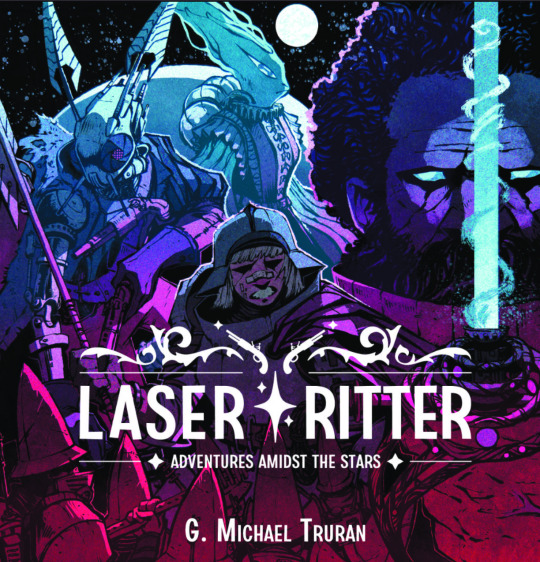
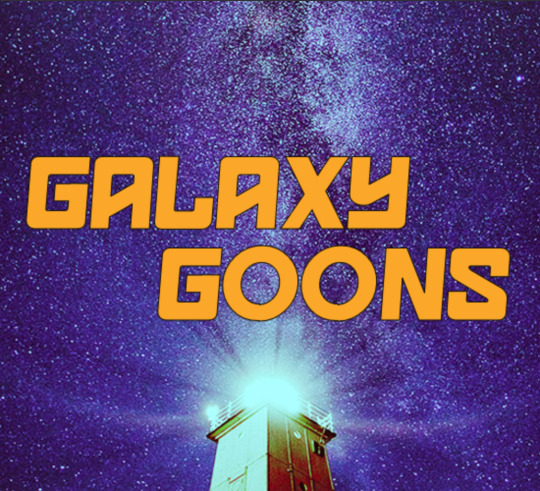


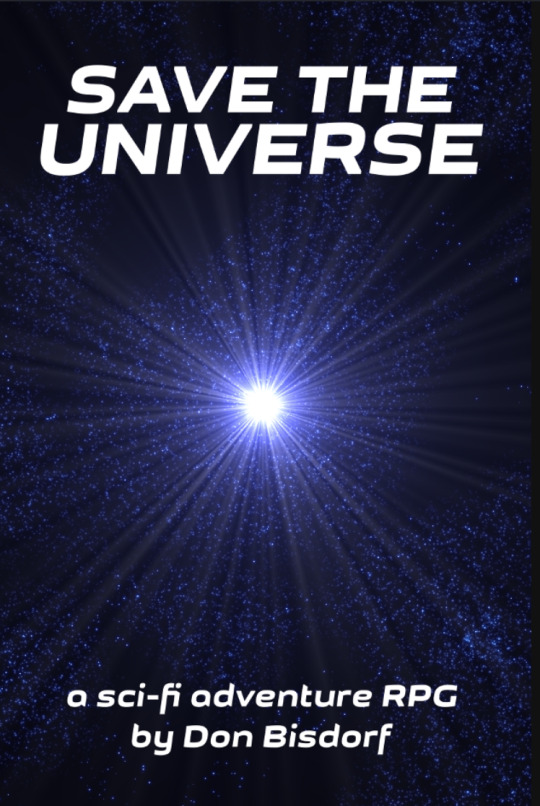
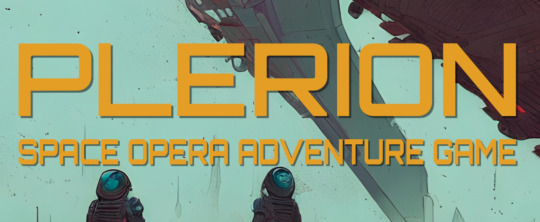

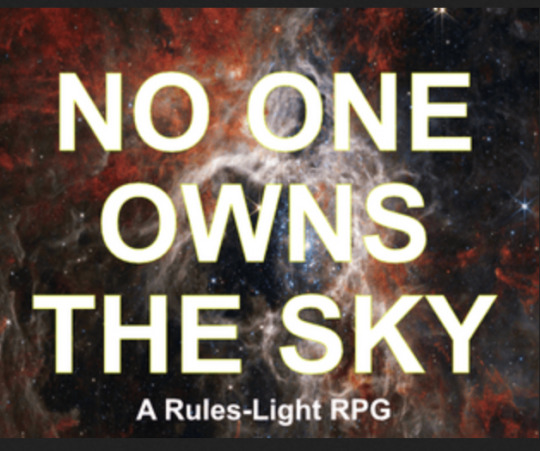
Laser-Ritter, by Bad Quail Games.
Laser-Ritter is an analog adventure game about swashbuckling heroes journeying among endless stars to embrace their destiny. There are rendezvous in hazy tap rooms, chases across distant moons, and showdowns with the forces of galactic evil. We play to find out how our Laser-Ritters follow their passions and face their pasts to triumph over adversity.
Laser-Ritter gives space for you to create your own saga. There's no burdensome timeline of canon events or overwhelming lists of characters, spaceships, and alien species to be contradicted. Every group begins their saga by creating their own dramatic title crawl to establish what's happening when the adventure begins!
This is a game all about embracing your destiny, with plenty of space to build your own universe. The game can be played episodically, or cover a long-spanning story over a series of sessions. This means that if you just want to run a one-shot, it can be pretty easily self-contained, but there’s also room to expand the game.
Players in this game have 4 stats and a health track labelled Vitality. You also have something called a Pathos track, which represents how attrition and trauma affect your character. If you fill your Pathos track, your character becomes vulnerable to dying. If you want a game with dramatic action and tragic scenes, Laser-Ritter might be for you.
Galaxy Goons and A Goons’ Guide to the Galaxy, by John Erwin.
Galaxy Goons is a space fantasy adventure hack of the Ennies-award winning Tunnel Goons. If you want a light-hearted game about rascals just trying to make their way in the universe, this is worth checking out. Tunnel Goons is known for being pretty light-weight, and Galaxy Goons is true to this legacy. Your characters are rolled randomly, with stats used to add onto dice rolls to try and beat a difficulty level.
A Goon’s Guide to the Galaxy is made for the same kind of setting, but uses a different set of rules, namely the 24XX SRD. This means that instead of just rolling d6’s, your characters will have a few things that they have a d8 or d10 for, and there might even be a few skills that only allow you to roll a d4. 24XX games also tend to carry roll tables to help the GM come up with obstacles and goals, so that might help the GM decide what about this homemade galaxy might be interesting to follow.
Rebel Scum, by 9th Level Games.
REBEL SCUM tells the story of how scrappy, anti-fascist heroes can fight back against a government with unlimited power (including giant lasers and space magic). Inspired by a love for a certain line of 3 and 3/4 inch action figures, this is a fast paced, feel good, space opera of rebellion and adventure.
In this TTRPG, characters are all expressed as action figures, with their pertinent stats and abilities "on the back of the card." Choose your toy and get out into battle!
So Rebel Scum borrows very obviously from Star Wars, but of course the book can’t just put the game in the Star Wars setting, so they create their own. What this means is you can pretty easily throw out that lore and build your own world, although the expectation in this game is that your characters will be working to overthrow some sort of galaxy-wide power. The rules are very simple to learn - in fact the booklet is under 100 pages, and that’s including art, setting, and example characters. If you have a standard set of polyhedral dice (and I’m assuming you do, if you’ve played D&D) then you’ll be able to play this game.
Save the Universe, by Don Bisdorf.
Tyranny and cruelty have spread across the galaxy, and only you can stop it!
Save the Universe is a sci-fi adventure roleplaying game in which the players create their own great galactic menace and then portray the brave heroes battling against it.
I think the biggest pull for this game is that it encourages you to build your own galaxy. The game even comes with a number of questions for you to answer, and if you already have a world decided, you can slot in the answers according to your friend’s world. In fact, assigning world creation to one player is actually a recommended option in the game!
Even though this game is pretty open in terms of the details of your galaxy, there’s still an overarching theme of an Empire or large enemy that your characters will be resisting. Then again, I have a feeling that’s a common theme in space operas.
Plerion: Space Opera Adventure Game, by Zotiquest Games.
Intrepid spacers ply the vastness of the Five Galaxies in search of fortune and glory.
This is Plerion, a sci-fi hack from Cairn designed to play radiant space opera. Inspired by classic science fiction and the RPGs that emulate it, but with a more modern twist, winking at transhumanism and cyberpunk.
Plerion is an adventure game for one referee and at least one other player. Players act as hardened spacers exploring, exploiting and commerce through the vastness of space in the far future.
The author of this game cites Mass Effect, the Traveller roleplaying game and the Wayfarer series by Becky Chambers. Cairn, the game that inspired this one, is a game that makes survival difficult and daunting for the players, and asks them to put the fiction first. This means that combat shouldn’t always be the answer. Instead, players are encouraged to find ways to solve problems using their tools at hand, which is a common trend in many of the games that inspired this rule system.
What’s So Cool About Outer Space, by Jared Sinclair.
WSCAOS is a tiny little system for going to space no matter where you are!
This is an incredibly tiny game, with just two pages to print out and use as a rules reference in any galaxy you like. It’s also the parent of a number of “What’s So Cool About" games that use the same philosophy - minimal rules, and plenty of agency left up to the group in terms of what possible backstories you might have, as well as what might be considered an advantage and what might not.
No-one Owns The Sky, by Free Radicals Press.
A band of misfits lives aboard a rundown starship, traveling from one frontier world to the next, hoping to make a name and a living for themselves. Along the way, things always seem to go sideways, but the crew holds on, no matter what.
NO ONE OWNS THE SKY is a sci-fi roleplaying game that is rules-light and relies on players to craft and flesh out the universe of the setting as a collective. This game was designed for two or more players. One player is always the referee (REF), a neutral arbiter and guiding force for the game. The others act and play as player characters (PCs). These players, with their REF and their PCs, will tell amazing, collective (and interactive) stories with the help of imagination, dice, roleplaying, critical thinking, and problem-solving.
This game uses a staggered success layout, which means that you could roll a failure, a success, or a mixed success during any given roll. Anything above a 5 is a success! It looks like the game uses more than just d6’s though, so the larger dice you roll, the higher your chances of succeeding. The setting is also up to the players, pretty good for folks who want to build their own galaxy.
Games I’ve Recommended in the Past
Space Fantasy Rec Post
Impulse Drive, by Adrian Thorn.
Syzygy, by Ostrichmonkey Games.
68 notes
·
View notes
Text
2024 Journal Reflections

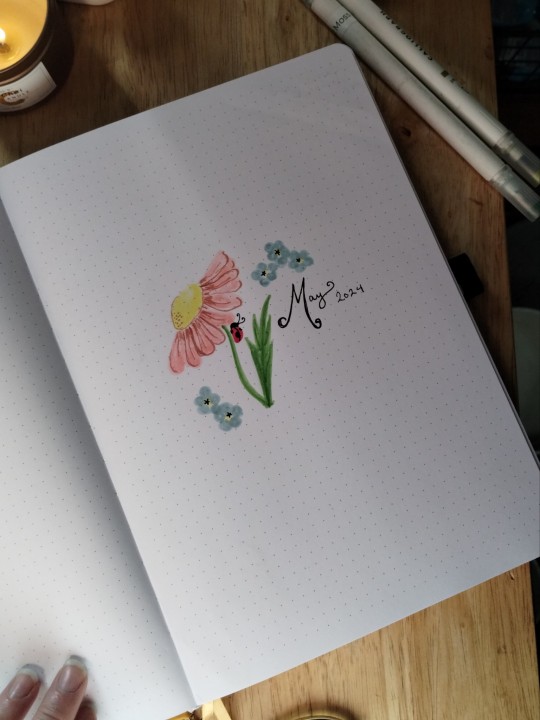
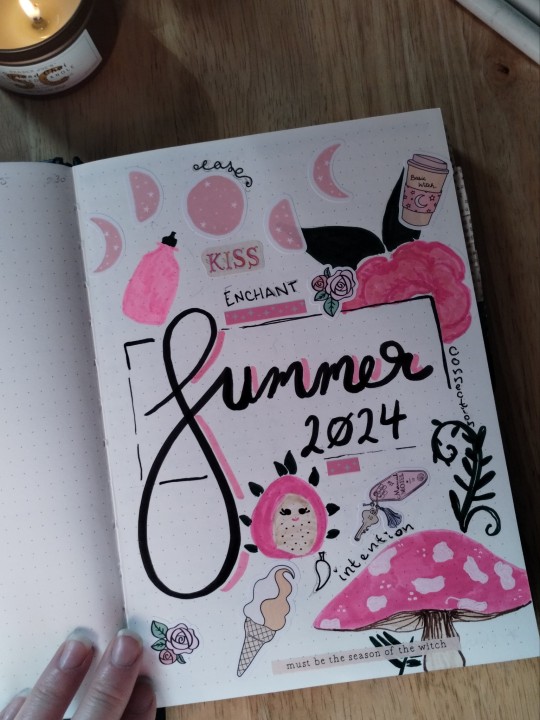
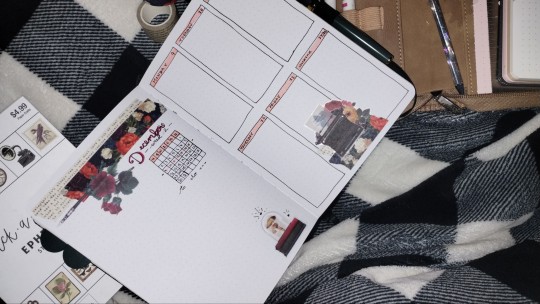
In 2024 I filled up 5 journals!! In 2023 I only filled up 2. Looking at the stats I did a daily journal entry about 50% of the time, and used the bullet journal spreads I created about 80% of the time. I wanted to figure out how often I wrote over one page but I couldn't figure out how to track that :/
This year I experimented A LOT with how I journaled, while some things stayed consistent. I use a catch all journal, so I carry around one journal and put everything in it for a few months and then start a new one when its full. I do a combo of bullet journaling, goal planning, memory keeping, daily vents/dumps, journal prompts, and art journaling.
This year I wanted seasonal/quarterly journals with consistent spreads and check ins. I have been a slut for the Archer and Olive A5 journal for maybe 5 years, but this year I tried new sizes and brands.While I did really enjoy trying new sizes, in 2025 I will be going back to the A5. I particularly enjoyed the larger B5 size to give me more space and add a little empty space to the pages instead of cramming them full. Unfortunately, A5 is more practical for keeping my journal in my purse. But I tried a Quirky Cup Collective journal and loved it so I have two more for next year!
One thing I loved was having consistent goal planning spreads across each journal, and to simplify that for 2025 I wrote my long term goals on cards to move into each journal as I go, and write monthly and weekly goals to support my goals for the year.
One of the huge successes of my year was using 3 different journaling practices consistently to support my mental health.
The first two are from The Artists Way, an incredibly famous self help book that I ended up loving but kind of cherry picking from rather than living by. From this book I took morning pages, the practice of writing 3 pages of stream of consciousness right when you wake up. I used it right when I got home from work instead and it really helped me relax and feel more positive as I transitioned into my evening. I probably didn't do it very consistently but I loved it. I also started writing affirmations out ten times, also from the Artists Way. Again, I wasn't very consistent but I like it!
The last one I used was 3 good things, a practice where you write down three good things daily, writing at least a paragraph per thing, trying to bring yourself back to the moment of feeling good. This came from the Science of Happiness podcast, and I did i consistently a few years ago.
My biggest failure was giving up on bullet journaling for October and November. I started school and decided I should use a planner to ensure I was staying on top of grad school stuff, and I kind of hated i and didn't use it. So. Back to bullet journaling. I have given up on bullet journaling many times over the years, as I do so much writing and feel like I should focus on that, but I always regret it.
This got really long, so I will make a seperate post going into what my plans are for next year!
8 notes
·
View notes